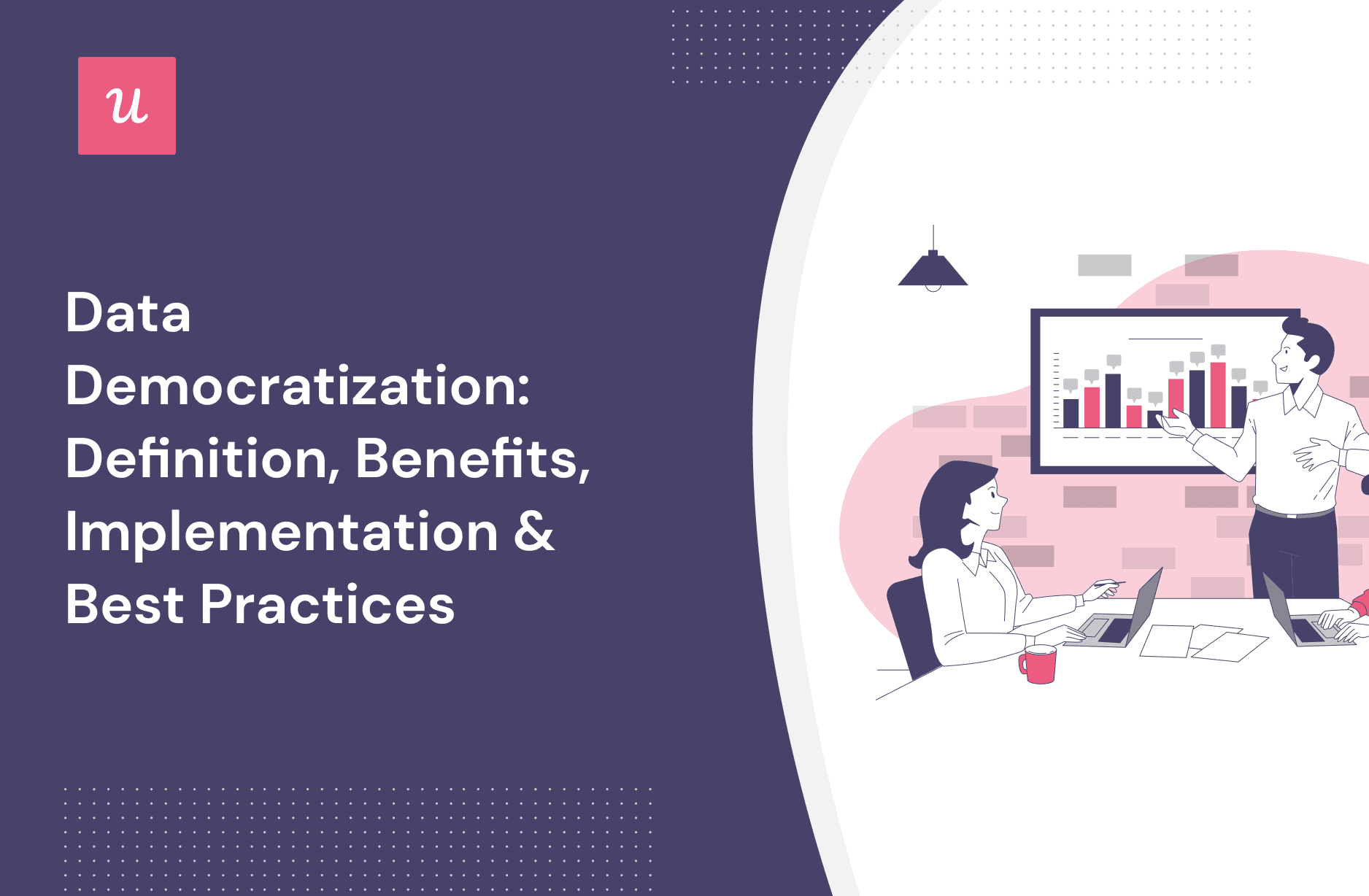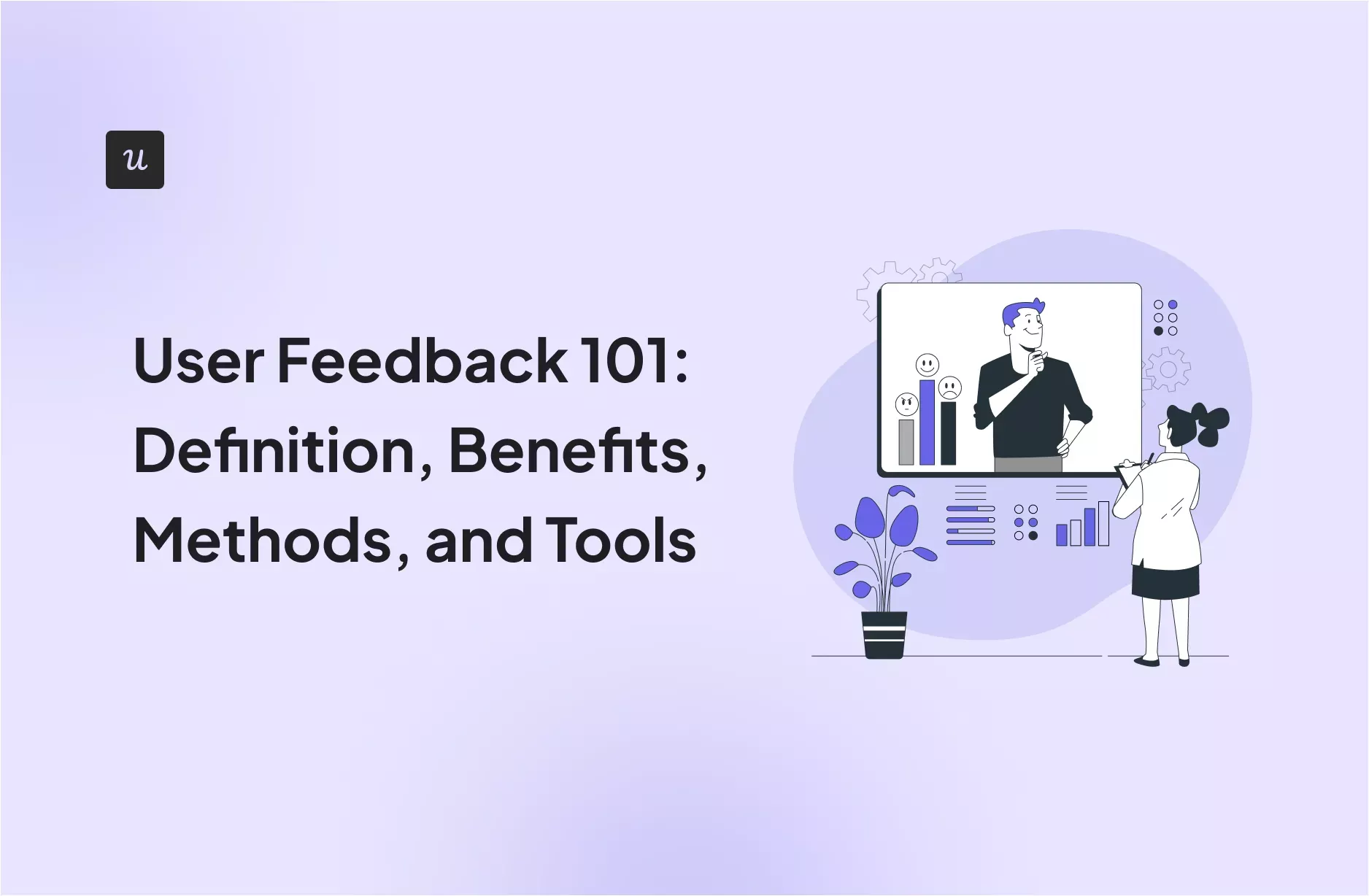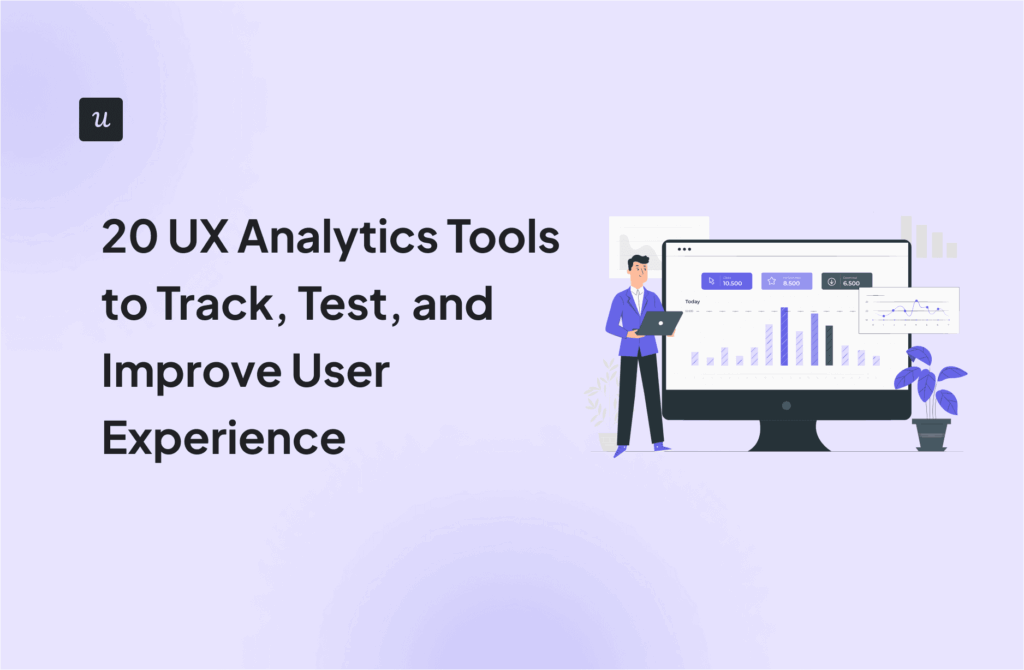
Data Democratization: Definition, Benefits, Implementation & Best Practices
How to promote data democratization in your SaaS business to improve decision-making?
If you’re looking for the answer to this question, you’re in the right place because that’s exactly what this article is about!
Let’s get right to it, shall we?
Try Userpilot Now
See Why 1,000+ Teams Choose Userpilot

What is data democratization?
Data democratization is the process of making data easier to access and understand for non-tech users across the organization. In this way, it reduces their dependence on IT teams and data analysts and helps them make better-informed decisions.
One way in which data democratization helps organizations remove obstacles that stop people from accessing, analyzing, and acting on data, is by developing data literacy. This involves training people on how to use data and promoting a culture where data-driven decision-making is valued and promoted.
Why is there a need for democratizing data?
Organizations might need to consider data democratization initiatives if:
- Their teams work in silos and have difficulties sharing information.
- They heavily rely on IT or data analysts for data access.
- Devs and analysts get overloaded with requests to run data queries and create reports.
- There are bottlenecks in the decision-making processes.
- Employees prefer to act on their gut feelings rather than empirical evidence.
What are the benefits of data democratization?
SaaS businesses can benefit from data democratization by helping teams make data-driven decisions, boosting their productivity and efficiency, and improving data collaboration between them.
Informed decision-making backed by relevant data
By democratizing data in your organization, you give teams the ability to make better decisions based on data rather than their gut feelings or intuition.
Let’s imagine the product team witnesses a drop in the activation rate. They could carry out funnel analysis to identify the exact stage where users fail to convert. Next, they would follow up with session recordings, and user interviews to identify reasons.
Finally, they could act on the insights by modifying the onboarding flow and triggering contextual in-app messages to drive engagement and activation.

Increased employee productivity and efficiency
When employees can access and analyze data independently to extract actionable insights, it boosts their productivity and efficiency massively. That’s because they don’t have to wait for their IT colleagues to process their requests and generate reports.
For example, if they identify friction at a particular stage in the user journey, they can quickly follow up by analyzing user engagement at this stage in more detail and iterate on the insights quickly to optimize it.
Enhanced collaboration between departments
Data democratization improves communication and collaboration between teams within the organization.
First, it enables teams to share data easily. As a result, each team gets a more complete picture of customer data, leading to improved problem-solving and decision-making.
We could say that data democratization is like giving your teams a shared language they can use to communicate with one another.
What’s more, data visualization tools allow them to communicate ideas clearly with stakeholders that may not be involved in product development directly, like senior leadership.
What are the challenges of data democratization?
While data democratization has undeniable benefits, it also presents certain challenges that organizations need to address.
Potential misuse of sensitive data
SaaS businesses have access to sensitive data which needs to be managed properly to avoid issues.
For example, giving all employees access to all customer data can lead to privacy violations and data leaks. Such misuse of data will not only bring on you the wrath of customers but also of the authorities. GDPR violations can be pretty expensive.
Data governance and security concerns
Establishing effective data governance and ensuring data security is another challenge.
Robust data governance practices are crucial to ensure that data is accurate, consistent, and secure. For example, without proper data governance, there could be inconsistent data definitions across the organization leading to inaccurate analysis and reporting.
Without adequate protection measures, there could be data breaches leading to financial loss and damage to the company’s reputation. For example, a CRM platform would probably not recover from a loss or theft of customer data stored in the cloud.
How to implement data democratization in your SaaS?
Implementing data democratization projects to maximize the benefits on the one hand and reduce the risks on the other can be a complex process. Let’s look at its key steps.
Identify data sources across the company
Start data democratization initiatives by identifying all data assets like databases, spreadsheets, and tools where data is stored.
This will enable you to integrate the data and ensure that everyone can access what they need and break down any silos.
Assess employee data literacy
Assessing employee data literacy skills will help you determine what their training needs are and the software tools to use.
How can you evaluate employees’ data literacy?
For an objective picture, use a range of techniques and information sources, like:
- Past training logs.
- Self-assessment surveys.
- Line-manager feedback.
- Quality of their deliverables in data projects.
- Data usage monitoring (e.g., how often they use certain tools).
- Assessment tasks related to their roles, like using reporting and visualization tools to interpret and present data.
Choose the right tech stack for providing data access
What kinds of data analytics tools you choose will depend on the outcomes of the skills assessment as well the organizational needs. Here are a few options
- Data warehouse – data warehouses like AWS Redshift enable you to consolidate your data in one place.
- Federation software – if you have a lot of data stored in different formats and locations, a data federation solution like IBM Pure Data may be a more practical solution than a warehouse.
- Data analysis tools – dedicated tools for statistical analysis, data manipulation, hypothesis testing, or predictive analytics, like IBM SPSS.
- Reporting and visualization tools – tools like Power BI or Tableau enable teams to create custom reports and visualize the data for easy interpretation and analysis.
- Customer data platform (CDP) for integration of data – solutions like Segment allow teams to collect, store and analyze data that comes from multiple sources, and then route them to various tools for better targeting.
Generally speaking, for non-technical employees, you’d need to invest in self service-analytics tools that allow them to achieve a number of objectives without help from data experts.
Tools like Userpilot offer advanced data analytics and visualization features under one hood.

Thanks to its integrations with CRMs and CDPs you are able to consolidate data from multiple sources without having to invest in multiple platforms.

Set guidelines for ensuring data quality and data security
Two issues to address next are data governance and security.
Establishing a robust data governance framework will ensure that your employees can find the data they need and that the data is accurate and consistent. The framework needs to define data quality standards and KPIs for measuring and monitoring data quality.
Standardization of all the metrics different teams use could be the first step in the process.
In addition to that, you also need to establish clear data access and usage guidelines.
In short, you need to decide who can access data, in which situations, and for what purposes. This will help you make sure that your employees use the data responsibly and comply with external regulations, like GDPR.
Invest in continuous employee training
Once you choose your tool stack and define data governance and security rules, it’s time to train your employees on how to apply them.
Initially, this involves employee onboarding which enables them to start using the tools effectively and in line with the rules.
Once they start getting independent, they will need a support system that will help them with troubleshooting and provide guidance on data-related problems. This should include continuous training to keep their knowledge and skills current.
How can you do it?
Apart from traditional in-person workshops or webinars, you can deliver the training via LMS platforms like Canvas or Litmos. This is a cost-effective solution in which users can access the resources on-demand and it’s easy for you to track their progress.
You can also develop peer learning groups and mentoring or coaching programs to enable collaborative learning.
Overall, investing in staff onboarding and ongoing training is essential to democratize data in your organization successfully.

Data democratization best practices for increasing data literacy
What else can you do to drive data democracy and literacy in your SaaS business? Let’s look at a few best practices.
- Create a culture of data democratization in your company – to encourage the use of data to back decisions and promote good practices.
- Constantly review the training programs – gather feedback from users about their data literacy experiences and collect empirical data about their performance to refine training programs and develop customized learning paths.
- Identify and empower data literacy champions – choose highly-skilled team members within different departments to act as advocates for data literacy and provide assistance to others.
- Celebrate success stories – share stories of successful applications of data analytics to highlight its benefits.
Conclusion
Data democratization enables teams from the organization to collaborate more closely and leverage data to make informed product decisions.
To successfully implement data democratization projects, you need to define your goals, assess the data literacy of your staff, choose the right tools, define rules on how to use them and train your employees.
If you want to see how Userpilot can help you democratize data in your organization, book the demo!






